May 14, 2006
Neurotech-art
Re-blogged from: Neurofuture
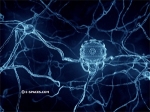
Philippe Van Nedervelde's E-spaces 3D Art Studio created Nanobots replacing neurons (nerve cells). This a still image of HD animation, depicting robots in the brain, from the transhumanist documentary Beyond Man (2005).
Although imaginary, current developments like MIT's nano neuro knitting experiment in which peptide nanofiber scaffolding was used to repair brain tissue in a hamster (article in PNAS) make it prescient.
Van Nedervelde's art is part of NANO, a virtual exhibit curated by transhumanist visionary Natasha Vita-More to showcase nanotech art by artists from a number of disciplines, including the multitalented Anders Sandberg. He's a computational neuroscientist and research associate at Oxford's Future of Humanity Institute.
Listen to a recent interview on the subject with Natasha Vita-More by RU Sirius from The MondoGlobo Network, as well as a podcast called Global Design and Nanotechnology from the (podcast archive alert!) Futures Podcast on Culture and Technology series.
14:40 Posted in Cyberart | Permalink | Comments (0) | Tags: Positive Technology
May 13, 2006
Emotion's Defibrillator

Tobias Grewenig's new installation Emotion's Defibrillator aims to explore how media affect our physiology:
The user of the installation, wearing an oxygen mask and a pincer on his left forefinger that will measure his/her pulse, puts his head into a big sphere. By placing the hands on two metalic spheres, the equipment is set in motion. First, bio data such as respiration, pulse and skin resistance are measured by the sensors and sent to the software to define the starting parameters. There are various sources of audio and a screen within the sphere. In relation to the data picked up from the body, the audio resonates, tiny electric shocks are delivered via the metallic spheres while the screen shows a flickering image of the user which is being interrupted by "subliminals". When the user takes the hands off the spheres, the installation stops.Grewenig says that it's fascinating to observe how the electronic equipment, although basically off-the-shelf material, starts frightening its user and turns into something profoundly unpredictable. This already happens when the sensoric input is roughly at the level of everyday city-life. (Well, plus electric shocks, that is.)
19:35 Posted in Cyberart | Permalink | Comments (0) | Tags: Positive Technology
May 07, 2006
Robotic Action Painter
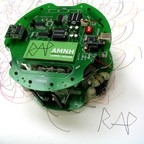 RAP (Robotic Action Painter) is a new generation of painting robots designed for Museum or long exhibition displays. It is completely autonomous and need very little assistance and maintenance. RAP creates it's own paintings based on an artificial intelligence algorithm, it decides when the work is ready and signs in the right bottom corner with its distinctive signature. The algorithm combines initial randomness, positive feedback and a positive/negative increment of 'color as pheromone' mechanism based on a grid of nine RGB sensors. Also the 'sense of rightness' - to determine when the painting is ready - is achieved not by any linear method, time or sum, but through a kind of pattern recognition system.
RAP (Robotic Action Painter) is a new generation of painting robots designed for Museum or long exhibition displays. It is completely autonomous and need very little assistance and maintenance. RAP creates it's own paintings based on an artificial intelligence algorithm, it decides when the work is ready and signs in the right bottom corner with its distinctive signature. The algorithm combines initial randomness, positive feedback and a positive/negative increment of 'color as pheromone' mechanism based on a grid of nine RGB sensors. Also the 'sense of rightness' - to determine when the painting is ready - is achieved not by any linear method, time or sum, but through a kind of pattern recognition system.
13:10 Posted in Cyberart | Permalink | Comments (0) | Tags: Positive Technology
May 02, 2006
Telepathy Playground
(Bill Hanley, Rhizome News)
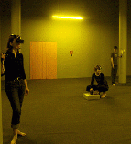
Marseilles-based artist Mathieu Briand makes installations that use light, video, sound, and other media to let viewers destabilize and manipulate their own perceptions. His stylish works adopt the sleek, cold, and ambiguously menacing look of '2001: A Space Odyssey' and other dystopian science fiction fables of that era. Briand's first U.S. solo show recently opened at Los Angeles' Redcat gallery, and its title, Ubiq: A Mental Odyssey references both the Kubrick film and 'Ubik,' the Philip K. Dick classic about telepathy, unstable realities, and an elusive cure-all product. On view through June 18, the exhibition includes a standout work consisting of four retro-futuristic helmets outfitted with cameras and monitors, which allow wearers to swap perspectives and steal each other's points of view as they explore the exhibition. The piece highlights an important difference between Briand's work and the bleak science fiction tradition that he references: his work makes a hallucinatory future of failed technological utopias seem like fun. In these playful installations, a Phillip K. Dick-style confusion between reality and fractured perceptions becomes the perfect context for anarchic play. -
22:23 Posted in Cyberart | Permalink | Comments (0) | Tags: Positive Technology
Apr 25, 2006
Takeluma sonic alphabet

[pcho.net & pcho.net (avi, 13mb)]
23:02 Posted in Cyberart | Permalink | Comments (0) | Tags: Positive Technology
Apr 22, 2006
A website that predicts your thoughts
From Cognitive Daily
There is a website that claims to predict with 98 percent accuracy what site visitors would be thinking after a short quiz.
I tried the game and it worked!
Then I looked for other mind-readers, and I found several versions:
there is even a website that offers different Flash-based customizations of the mind reader
12:47 Posted in Cyberart | Permalink | Comments (0) | Tags: Positive Technology
Apr 07, 2006
Cave Writing Workshop
From the CAVE Writing website
The Cave Writing Workshop is an advanced experimental electronic writing workshop, exploring the potential of text, sound, and narrative movement in immersive three-dimensional virtual reality. It brings together teams of undergraduate and graduate fiction writers, poets and playwrights, composers and sound engineers, graphic designers, visual artists, 3D modelers and programmers, to develop, within the environment of Brown’s “Cave” in the Technology Center for Advanced Scientific Computing and Visualization, projects that focus on the word.

Powered by a high-performance parallel computer, the Cave is an eight-foot cube, wherein the floor and three walls are projected with high-resolution stereo graphics to create a virtual environment, viewed through special “shutter-lens” glasses. The Cave Writing Workshop has introduced a Macintosh sound server to provide positional sound and augment the Cave’s performance potential, surrounding the “reader” with dynamic three-dimensional sound as well as visuals. It has brought text into this highly visual environment in the composing of narrative and poetic works of art, and has experimented with navigational structures more akin to narrative, and in particular hypertext narrative, than to the predominant forms of spatial exploration.
11:04 Posted in Cyberart | Permalink | Comments (0) | Tags: Positive Technology
Mar 19, 2006
Brains are gorgeous at the right magnification
Via Neurofuture
Mark Miller's photographs of the brain show that even neurons can become spectacular pieces of art at the right scale. In particular, this photo (depicting red retrobeads from the pyramidal tract merged with a blue fluoroNisal counterstain)

reminds me of an artpiece of Italian artists Bianco-Valente, whose work focuses on the invisible co-evolution between natural and artificial, between biological and technological networks:
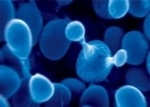
14:05 Posted in Cyberart | Permalink | Comments (0) | Tags: Positive Technology
Feb 14, 2006
Perfectly normal
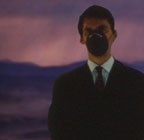
PerfectlyNormal is an interactive web-based video project that offers fourteen short video-based therapies. Depending on the "patients'" auto-description of their mental state, the web site automatically delivers one therapeutic video. According to the website disclaimer, the video-therapies were developed following principles of actual healing techniques derived from several different practices.
PerfectlyNormal is a web-based project commissioned by Soil Digital Media Suite, Neutral Ground Gallery, Regina, Saskatchewan, Canada. The project's author is composer and new media artist Michael Stecky (read short bio).From the project's website:
Bringing a unique healing experience, PerfectlyNormal, provides you and your family with the best integrated mental health care model the internet has to offer. Receive a personalized video therapy from our collection, a virtual one-stop shop of the best conventional and alternative practices from a diverse and interesting range of modalities.
PerfectlyNormal is an easy to use healing site made to work with you in mind. Visit when you like, PerfectlyNormal is available to you 24 hours a day, everyday. Now, feeling normal is only a mouse click away. PerfectlyNormal, have a perfect day everyday. PerfectlyNormal comes to you courtesy of the PerfectlyNormal Therapeutic Cooperative Alliance (PNTCA), a prestigious international group of like-minded therapists who share an inclusive spiritual philosophy.
11:25 Posted in Cyberart | Permalink | Comments (0) | Tags: Positive Technology, cyberart
Feb 13, 2006
Multisensory Interactive Installation
This article by Daniela Voto published on NOEMA describes a musical interactive system called "Multisensory Interactive Installation," (MII), which allows a user to paint and compose at the same time. But the most interesting feature of this installation is the implementation of artificial synesthesia (synesthesia is a neuropsychological phenomenon occurring when the stimulation of one sensory modality evokes a perception in one or more different senses).

Through MII, users can explore and manipulate visual elements, generating different musical outputs, constructing and deconstructing the art piece and/or creating a new work, and musical composition. The selection and organization of given visual-acoustic elements, determines the different musical atmosphere created by each user.
16:55 Posted in Cyberart | Permalink | Comments (0) | Tags: Positive Technology
Jan 28, 2006
Telepresence and Bio Art
Via Boing-Boing
For nearly two decades Eduardo Kac has been at the cutting edge of media art, first inventing early online artworks for the web and continuously developing new art forms that involve telecommunications and robotics as a new platform for art. Interest in telepresence, also known as telerobotics, exploded in the 1990s, and remains an important development in media art. Since that time, Kac has increasingly moved into the fields of biology and biotechnology.
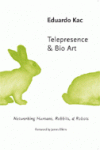 Telepresence and Bio Art is the first book to document the evolution of bio art and the aesthetic development of Kac, the creator of the "artist's gene" as well as the controversial glow-in-the-dark, genetically engineered rabbit Alba. Kac covers a broad range of topics within media art, including telecommunications media, interactive systems and the Internet, telematics and robotics, and the contact between electronic art and biotechnology. Addressing emerging and complex topics, this book will be essential reading for anyone interested in contemporary art. Artist Eduardo Kac is internationally recognized for his interactive Internet installations and his bio art. A pioneer of telecommunications art in the pre-web '80s, Kac emerged in the early '90s with his radical telepresence and biotelematic works.
Telepresence and Bio Art is the first book to document the evolution of bio art and the aesthetic development of Kac, the creator of the "artist's gene" as well as the controversial glow-in-the-dark, genetically engineered rabbit Alba. Kac covers a broad range of topics within media art, including telecommunications media, interactive systems and the Internet, telematics and robotics, and the contact between electronic art and biotechnology. Addressing emerging and complex topics, this book will be essential reading for anyone interested in contemporary art. Artist Eduardo Kac is internationally recognized for his interactive Internet installations and his bio art. A pioneer of telecommunications art in the pre-web '80s, Kac emerged in the early '90s with his radical telepresence and biotelematic works.
19:40 Posted in Cyberart | Permalink | Comments (0) | Tags: Positive Technology, cyberart
Jan 20, 2006
CYNETart_06humane

CYNETart has been showing new trends of cultural developments in the media arts since 1997. The consequences of the prevailing progress of civilisation and the introduction of new information technologies in all fields of social life lead to the disembodiment of perception triggering the examination of a new sensitivity for physical experience and for the perception of one's own body. The international festival focuses on the changed perception of the body caused by new information technologies. At this, the performance of the new technologie is less important, it is rather about their cultural potential for mediation. This applies f.i. to linkages between existential questions of humankind and their perception. It also applies to a more sensual approach to scientific methods of research and the interconnections between the arts.
All in all, CYNETart 2006 presents three awards. The CYNETart award donated by the Stiftung für Kunst & Kultur der Stadtsparkasse Dresden is endowed with 5,000 Euros. The CYNETart award donated by T-Systems Multimedia Solutions is endowed with 5,000 Euros. The sponsorship award of the Saxon Ministry of Science and the Fine Arts is endowed with 10,000 Euros. The award-winning works are selected from the submissions by an international expert jury. Application form online. The deadline for submissions is March 20, 2006!
Organiser: Trans-Media-Akademie Hellerau e.V. and The City of Dresden, Culture Office in co-operation with the European Centre for the Arts Hellerau
You get further information on www.cynetart.de and from
Trans-Media-Akademie Hellerau e.V.
Festspielhaus Hellerau, Karl-Liebknecht-Str. 56
01109 Dresden, GERMANY
Tel. +49-351-889 6665
Fax +49-351-34 000 33
20:10 Posted in Cyberart | Permalink | Comments (0) | Tags: Positive Technology
Jan 13, 2006
The Prix Ars Electronica 2006

The Prix Ars Electronica - International Competition for Cyberarts is being conducted for the 19th time in 2006. In addition to the classic categories-Interactive Art, Net Vision, Computer Animation / Visual Effects and Digital Musics-Digital Communities and [the next idea] Art and Technology Grant competition that debuted last year will be reprised.
Online Submission Deadline: March 17, 2006; Total Prize Money: 117,500 Euro; 6 Golden Nicas; 12 Awards of Distinction; Up to 12 Honorary Mentions in each category.
INTERACTIVE ART: The "Interactive Art" category is dedicated to interactive works in all forms and formats, from installations to performances. Here, particular consideration is given to the realization of a powerful artistic concept through the especially appropriate use of technologies, the innovativeness of the interaction design, and the work's inherent potential to expand the human radius of action.
COMPUTER ANIMATION/VISUAL EFFECTS
The "Computer Animation / Visual Effects" category has been part of the Prix Ars Electronica since its very inception. It recognizes excellence in independent work in the arts and sciences as well as in high-end commercial productions in the film, advertising and entertainment industries. In this category, artistic originality counts just as much as masterful technical achievement.
DIGITAL MUSICS
Contemporary digital sound productions from the broad spectrum of "electronica" come in for consideration in the "Digital Musics" category, as do works combining sound and media, computer compositions ranging from electro-acoustic to experimental music, or sound installations. This category's programmatic agenda is to expand horizons beyond the confines of individual genres and artistic currents.
NET VISION
The "Net Vision" category singles out for recognition artistic projects in the Internet that display brilliance in how they have been engineered, designed and-especially-conceived, works that are outstanding with respect to innovation, interface design and the originality of their content. The way in which a work of net-based art deals with the online medium is essential in this category.
DIGITAL COMMUNITIES
This category focuses attention on the wide-ranging social impact of the Internet as well as on the latest developments in the fields of social software, mobile communications and wireless networks. "Digital Communities" spotlights bold and inspired innovations impacting human coexistence, bridging the geographical as well as gender-based digital divide, or creating outstanding social software and enhancing accessibility of technological-social infrastructure. This category showcases the political potential of digital and networked systems and is thus designed as a forum for the consideration of a broad spectrum of projects, programs, initiatives and phenomena in which social innovation is taking place, as it were, in real time. A Golden Nica, two Awards of Distinction and up to 12 Honorary Mentions will be awarded in the Digital Communities category in 2006.
[the next idea] Art and Technology Grant
The aim of this grant focusing on the mutually enriching interplay of art and technology is to nurture concepts for the future that young thinkers are coming up with today. This category's target group includes interested persons throughout the world between the ages of 19 and 27, who have developed a not-yet-realized concept in the fields of media art, media design or media technology. The winner will receive a 7,500-euro grant and an invitation to spend a semester as scientific assistant and artist-in-residence at the Ars Electronica Futurelab.
10:28 Posted in Cyberart | Permalink | Comments (0) | Tags: Positive Technology
Dec 02, 2005
Ecstasy exibition: in and about altered states
 Ecstasy presents recent and specially commissioned works that challenge notions of interactivity while generating a heightened aural and visual experience for the individual. Featured artists include Franz Ackermann, Eija-Liisa Ahtila, Francis Alÿs, Chiho Aoshima, assume vivid astro focus, Massimo Bartolini, Tatsurou Bashi, Glenn Brown, Janet Cardiff and Georges Bures Miller, Olafur Eliasson, Lara Favaretto, Sylvie Fleury, Tom Friedman, Rodney Graham, Jeppe Hein, Carsten Höller, Pierre Huyghe, Ann Veronica Janssens, Ann Lislegaard, Matt Mullican, Takashi Murakami, Paul Noble, Roxy Paine, Charles Ray, Erwin Redl, Pipilotti Rist, Paul Sietsema, Fred Tomaselli, and Klaus Weber. The exhibition is organized by Chief Curator Paul Schimmel with Gloria Sutton and is accompanied by a fully illustrated catalogue.
Ecstasy presents recent and specially commissioned works that challenge notions of interactivity while generating a heightened aural and visual experience for the individual. Featured artists include Franz Ackermann, Eija-Liisa Ahtila, Francis Alÿs, Chiho Aoshima, assume vivid astro focus, Massimo Bartolini, Tatsurou Bashi, Glenn Brown, Janet Cardiff and Georges Bures Miller, Olafur Eliasson, Lara Favaretto, Sylvie Fleury, Tom Friedman, Rodney Graham, Jeppe Hein, Carsten Höller, Pierre Huyghe, Ann Veronica Janssens, Ann Lislegaard, Matt Mullican, Takashi Murakami, Paul Noble, Roxy Paine, Charles Ray, Erwin Redl, Pipilotti Rist, Paul Sietsema, Fred Tomaselli, and Klaus Weber. The exhibition is organized by Chief Curator Paul Schimmel with Gloria Sutton and is accompanied by a fully illustrated catalogue.18:51 Posted in Cyberart | Permalink | Comments (0) | Tags: Positive Technology
Nov 28, 2005
60 seconds trip
15:00 Posted in Cyberart | Permalink | Comments (0) | Tags: Positive Technology
Nov 03, 2005
My favourite poet brought back to life
via BBC news
My favourite poet Dylan Thomas is being brought back to life in the form of a computer-generated 3D moving image by art student Bernard Mitchell. The image was created from his death mask. 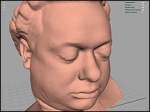 To re-create Thomas face, the death mask of the poet was first skanned at the hospital's maxillofacial department. Next, the scans were used Swansea-based 3D animators iCreate to apply a virtual skin around the structure.
To re-create Thomas face, the death mask of the poet was first skanned at the hospital's maxillofacial department. Next, the scans were used Swansea-based 3D animators iCreate to apply a virtual skin around the structure.
For those who would like to have more info, visit the project's web site
22:30 Posted in Cyberart | Permalink | Comments (0) | Tags: Positive Technology
Oct 31, 2005
Alzheimer's Art therapy
via Neurodudes
The New York Times reports about visual-art therapy, an approach which seems to have positive effects on Alzheimer's brain disease. Though it has long been known that music has beneficial effects in the rehabilitation of brain-injured patients, the potential role of visual arts has not been systematically explored so far.  According to neurologist and scientis Oliver Sacks, an aesthetic encounter is not just a visual experience, but involves the activation of emotions; further, he observes that demented patients can recognize and respond vividly to paintings, while they are scarcely responsive to words and disoriented and out of it
According to neurologist and scientis Oliver Sacks, an aesthetic encounter is not just a visual experience, but involves the activation of emotions; further, he observes that demented patients can recognize and respond vividly to paintings, while they are scarcely responsive to words and disoriented and out of it
read NYT full article
18:05 Posted in Cyberart | Permalink | Comments (0) | Tags: Positive Technology, cyberart
Oct 28, 2005
Frozen Niki
yesterday while I was visiting we-make-money-not-art I saw the picture of this strange-wearing guy
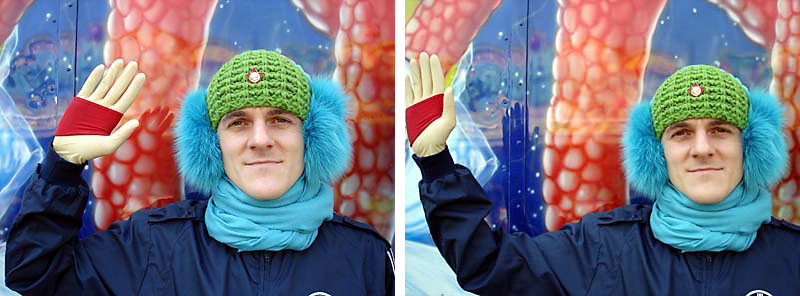
that face looked familiar to me but I could not recognize him. Then automatically popped into my head the name of my ex-colleague at Fraunhofer VR-Lab, Dragan Espenschied.
To my great surprise, I discovered that Dragan has become a world-famous electronic music artist as well as a respected media artist. These pictures are part of one of his last works, Frozen Niki
Frozen Niki is a story of this cosmonaut, organized in the form of a blog without text and has to be read from bottom up to follow his fragmentary thoughts and a detective love story:
“… and now a few words about one of the most important members of the intergalactic expedition, Nikolaj Osinin. He will not be able to participate in the everyday life of the mission. He has his own mission: to remain young and fit until the spaceship Zvezdostella reaches the Magellanic Clouds, to perform his tasks upon arrival then pilot the ship back to the Milky Way and finally to Earth. He’ll spend the next 20 years in a cryogenic box. But he will be with us. His brain activity will be monitored by the Central Mission Computer. In due course Nikolaj’s cranium will be stablized at the -20°C mark and data transmission to the Bajkanur server will be initiated and fed immediately via the Internet to Nikolaj’s personal blog.”
compliments Dragan!!
12:56 Posted in Cyberart | Permalink | Comments (0) | Tags: Positive Technology
Oct 21, 2005
Stelarc's Prosthetic Head
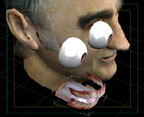
"...Words like "intelligence", "awareness" and "agency" describe particular and peculiar behaviors performed effectively and appropriately in certain locations and situations. We do not need to imagine that they indicate anything other than that. What is important is not what happens within us, but rather what happens between us in the medium of language in which we communicate, in the social institutions within which we operate and in the culture within which we've been conditioned - at this point in our history and so on, depending on our frame of reference. To talk of agency is to refer to an intentional act defined within a very small frame of reference. [...] In the body performances, the skin has been stretched, the body has been probed and its limbs have been extended. The interest is to construct alternate interfaces that explore the absent, alien, involuntary and automated. What we experience is emptiness, ambiguity and uncertainty. We fear what we have always been and what we have already become -- a zombie with no mind -- a body that performs involuntarily..." From Prosthetic Head: Intelligence, Awareness and Agency by Stelarc
18:45 Posted in Cyberart | Permalink | Comments (0) | Tags: Positive Technology
Oct 14, 2005
Feel like an expert surgeon
19:40 Posted in Cyberart | Permalink | Comments (0) | Tags: Positive Technology







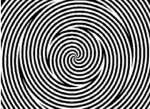
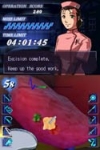 Trauma Center: Under the Knife puts the gamer in the role of a surgeon fighting a deadly epidemic. Funny, but as noted by Wired's reporter Chris Kohler, the
Trauma Center: Under the Knife puts the gamer in the role of a surgeon fighting a deadly epidemic. Funny, but as noted by Wired's reporter Chris Kohler, the